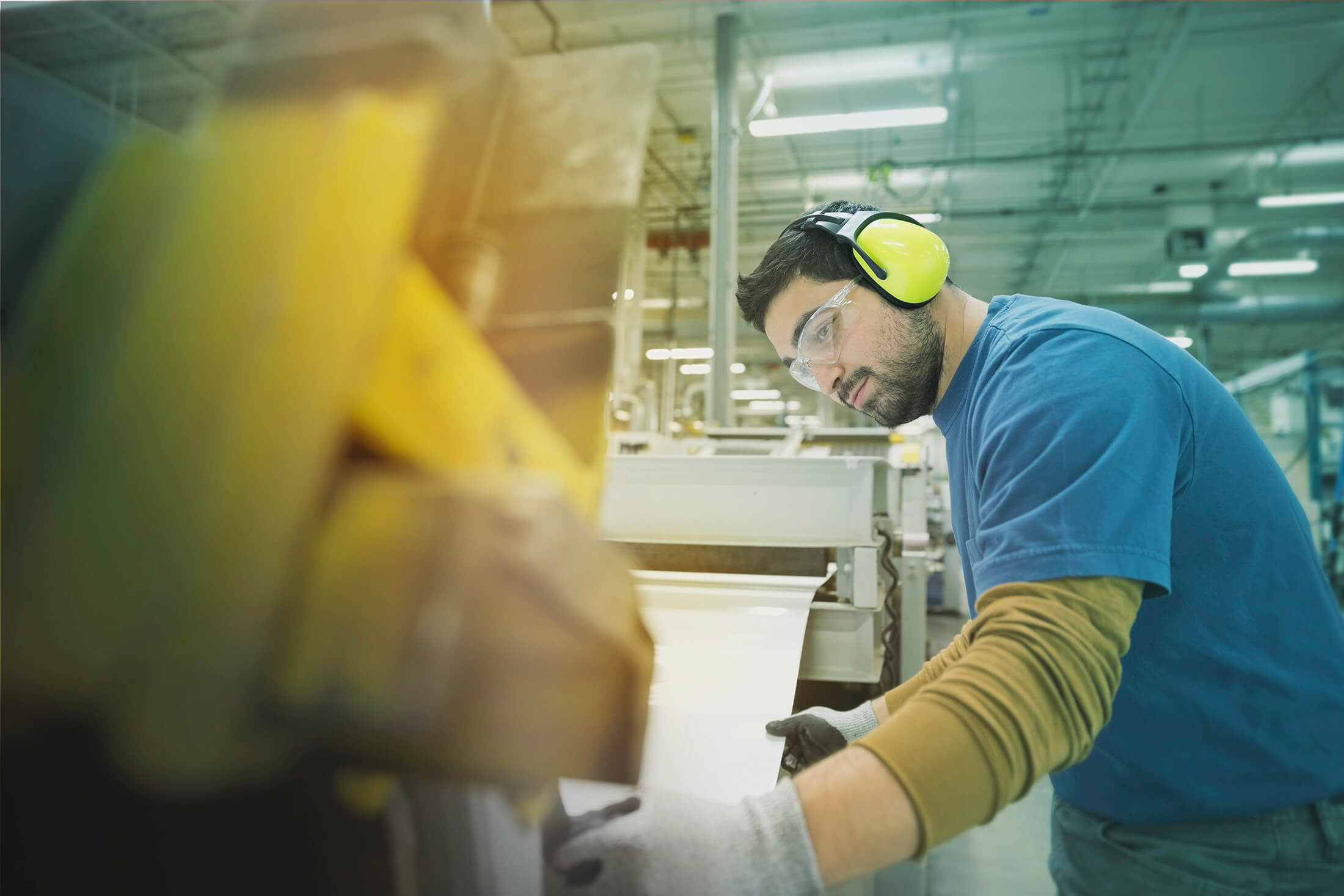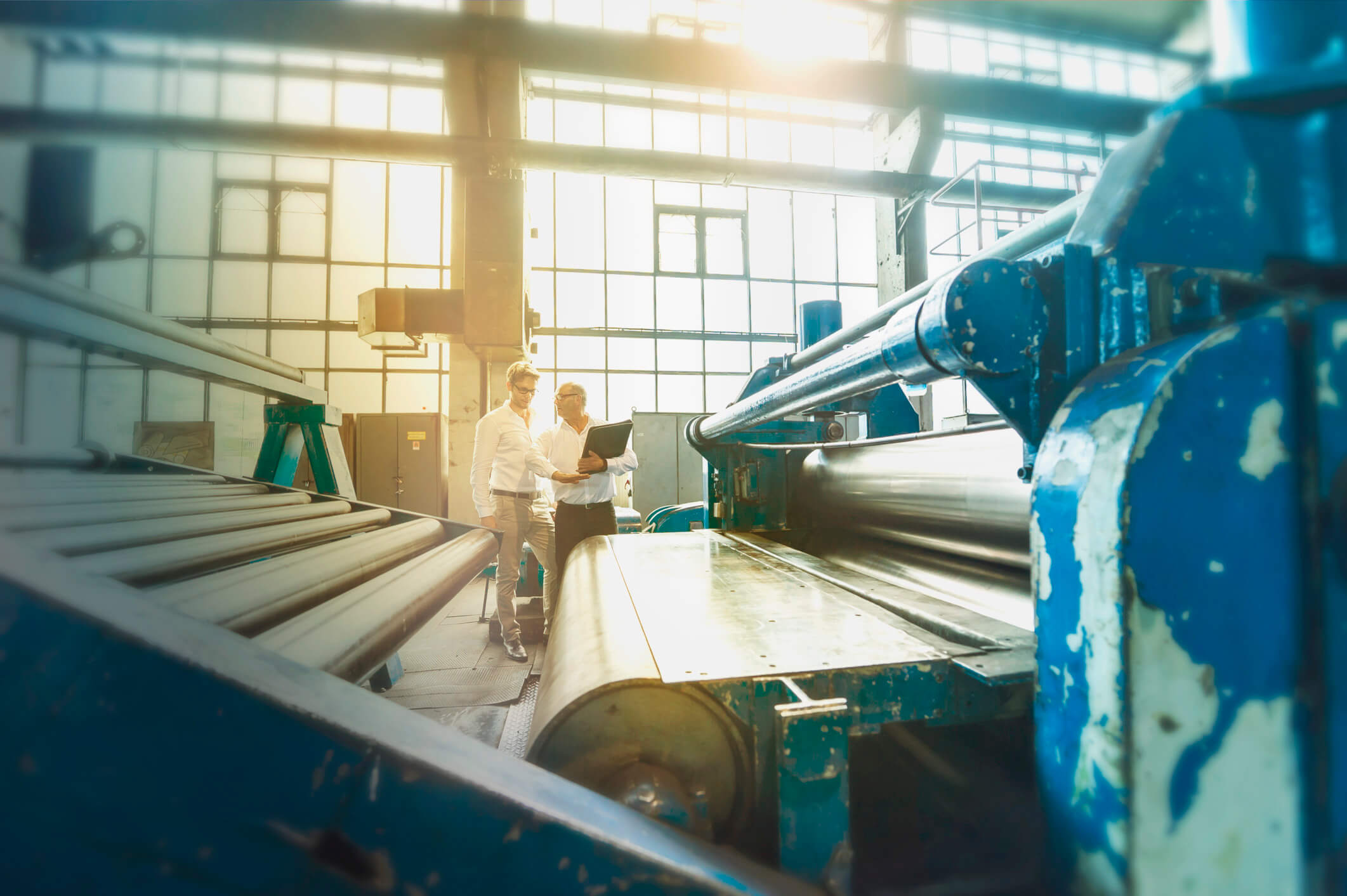Consumer use tax: What manufacturers need to know
How manufacturers can navigate the complexities of use tax

Introduction
Most manufacturers know what sales tax is and how it works, but they’re less familiar with the concept of consumer use tax. Levied on the storage, use, or consumption of a taxable item when no or not enough sales tax has been paid, use tax applies when a purchase is made outside of the taxing jurisdiction where the good or service will be used. Use tax also applies to tax-exempt purchases that are later used in a taxable manner.1
It’s the purchaser’s responsibility to pay the required consumer use tax, which is remitted directly to the taxing jurisdiction (specifically, the Department of Revenue in the specific state). Because consumer use tax puts the onus on the purchaser to pay the levy, and use tax is extremely complex, it’s become a hot button source of potential additional revenue for taxing authorities. In use since the early 1950s, use tax is applied to online purchases, mail orders, phone orders, items procured from out-of-state sellers, and other transactions.
What Is consumer use tax?
All taxable transactions involve three parties: the seller, the buyer, and the taxing jurisdiction. For transactions where consumer use tax applies, the process works like this:
- A company sells a good or service to a customer.
- The customer pays for the good or service, and the seller doesn’t collect enough or any sales tax.
- If that transaction is under-taxed, the buyer takes the correct amount of tax and remits it as consumer use tax to the appropriate taxing authority.
A tractor manufacturer in Michigan purchases components for its tractors from a parts maker in Wisconsin. The parts maker doesn’t charge sales tax for the parts, so the Michigan tractor manufacturer owes use tax for those parts.
Scenario #2: You consumed goods purchased for resale or incorporated into the manufacture of a finished product.
If your company buys a pallet of goods that goes into inventory for resale, it didn’t pay sales tax on those goods because that tax will eventually be collected when those goods are sold. However, if the goods are subsequently used within your own operation (e.g., 10 boxes of spare parts that you used or gave away versus selling to customers), then you’ll owe consumer use tax on those goods. This is because you effectively became a “consumer” of those parts versus a reseller.
Why does consumer use tax exist?
States created consumer use tax to capture revenue from taxable sales that were not getting taxed for one reason or another. When an out-of-state seller doesn’t have nexus in a state and doesn’t collect sales tax on sales into that state, the purchaser or consumer is required to remit the corresponding consumer use tax to state and/or local tax authorities. This is true whether the consumer is an individual, business, or other non-exempt entity.
Each state developed its own consumer use tax parameters, but the general requirements are similar across the board. In Ohio, for example, a manufacturer is considered a “consumer” of the goods that it’s not using directly in the manufacturing process. As such, the manufacturer is responsible for paying either sales or consumer use tax on the purchase of that good.
If the state’s sales tax isn’t levied (e.g., due to an exemption) on the goods, then the company owes consumer use tax on it. That tax is remitted directly to the state Department of Revenue by the manufacturer.2
Consumer use tax is also due when consumers make a purchase in jurisdictions with a lower rate of tax than the rate where the goods will be used. For example, if you have a business in Boston that regularly purchases office supplies in sales tax-free Nashua, New Hampshire, you owe Boston’s 6.25% use tax to the Commonwealth of Massachusetts. The burden to report and remit consumer use tax falls on buyers — not the sellers.
On the flip side of that coin, manufacturers may overpay and be eligible to reclaim funds. For example, a manufacturer purchases maintenance supplies in one jurisdiction, paying sales tax in the process, then ships those supplies for use in a different jurisdiction. If the use tax rate is lower there than it is in the jurisdiction where the goods were initially purchased, then the manufacturer will be due a refund.
Managing taxability in direct sales
Manufacturers make direct sales to retailers and distributors; some also sell their final products directly to consumers. As ecommerce continues to expand, and with the coronavirus pandemic impacting how customers procure goods, the direct sales channel is growing. This is putting more manufacturers in the position of having to pay use tax. These companies must ensure accuracy for their own use tax burden on products consumed or services purchased. Depending on the state they’re operating in, some products are not taxable if they’re used to build manufacturing equipment. However, the same product could be taxable if used to repair manufacturing equipment. For example, if the product in question is a small bolt, how do you handle taxability if some of its uses are taxable and some are not? Do you purchase everything and pay sales tax upfront? And if so, you would have to track, calculate, and request a refund of the tax that was paid on items that were used for an exempt purpose.

Once the identification of use and taxability is determined and documented, you must ensure the correct amount of use tax is accrued for each item and file a use tax return in a timely manner. In some states, there may be several different possible tax rates depending on the item and how and where it is used. These variables create complexity and tax compliance challenges for many. Additional challenges include:
- Self-assessment of consumer use tax is a manual, error-prone, and resource-intensive process requiring specialized skills.
- Use tax rules and rates are complex and subject to change.
- Consumer use tax audit risks are high. Auditors know use tax is complex and focus on it because it is low-hanging fruit. And, the State of California found that consumer use tax errors are among the top problems that it finds when auditing businesses for sales and use tax.3
- Tax triggers can come from numerous different sources.
Integration, data management, and automation are complex and difficult.
Consumer use tax gets even more confusing for manufacturing operations, which also have to deal with these issues when tracking, recording, and paying the tax to the appropriate authorities.

Machinery and equipment aren’t easy to track. Most of the states that collect sales and use tax offer use-based exemptions on purchases of machinery and equipment. The problem is, it’s extremely difficult for manufacturers to determine whether they qualify to take advantage of them due to limitations on use-based exemptions, including:
- Percentage of actual usage. In addition to a requirement that the equipment or machinery be used directly in the manufacturing process, there are also requirements around how often it has to be involved, typically between 51%–100% of the time.
- New and expanding operations. Some tax authorities limit use-based exemptions to items that are part of a “new manufacturing operation” or that “expand the existing manufacturing process.” As a result, machinery and equipment acquired to replace or repair old equipment wouldn’t qualify for the exemptions. This can be a tax sticking point for companies that are expanding and upgrading their operations.
- Minimum dollar amount/useful life. A typical minimum dollar requirement might be $100–$500, while typical economic life might span anywhere from one to three years. Any equipment or machinery that doesn’t meet these criteria might not qualify for a consumer use tax-based exemption. These requirements vary by state and can impact a manufacturer’s tax obligation.
Research and development (R&D). If a company is no longer using equipment or machinery to create something to be sold as a finished product or a component of a future finished product, it can impact that company’s consumer use tax obligations. For instance, if the manufacturer is using equipment to determine how to expand product lines or improve its products, that manufacturer has effectively become the “consumer” of that equipment. As such, it may wind up owing consumer use tax on the equipment that’s going to be used (versus resold).
Interplant transfers. These are transfers that take place when machinery, equipment, or parts are transferred from one plant or factory to another. These transfers often trigger taxable events.
Trade shows/inventory withdrawals. Here’s an area where manufacturers must carefully track their consumer use tax obligations. For instance, if a manufacturer withdraws 30 widgets from inventory to use at an upcoming trade show — or to send to customers to keep as samples — that “withdrawal” triggers a taxable event. The manufacturer becomes the end consumer of those widgets and may owe consumer use tax as a result.
This is just a sampling of the scenarios that take place on the manufacturing or plant floor daily, which can create a situation whereby the company owes consumer use tax. Rather than waiting for an audit to expose these issues, manufacturers can use technology to take a proactive approach to automating consumer use tax management.
Consumer use tax isn’t going away
Based on the complexities outlined above, manufacturers clearly need a reliable way to track, report, and pay consumer use tax. Unfortunately, many companies opt to ignore these rules and operate in “ostrich mode” until they get audited and wind up paying penalties. This is a risky approach given that many states now face severe budget shortfalls and will look to audits to uncover issues that will help fill the gap. Other manufacturers pay too much in consumer use taxes just to avoid having to do the associated math and paperwork, thereby negatively impacting their company’s margins and cash flow.

Here are the three approaches that manufacturers take to manage use tax obligations and why they don’t work:
- Make a best estimate and submit that amount of tax. This is usually formulated on a “best guess” lump sum payment that’s based on manual paper invoices or a series of spreadsheets. In many cases, manufacturers wind up paying more or less than what they actually owe. Either way, this approach leads to financial loss (either through overpayment or the penalties/fines associated with underpayment).
- Conduct a manual assessment. Manufacturers inspect the invoices when they are received and/or review them on a spreadsheet to come up with the amount of tax due. This is a time-consuming, laborious process that’s also error-prone.
- Outsource the task to a third-party. Some manufacturers opt to turn the task over to an outside accounting firm to sort it out for them, and to submit the proper paperwork and tax amounts. The process generally involves a one-time review to assess and address liabilities from the past. Manufacturers who strive for use tax compliance on an ongoing basis need an automated tax compliance solution.
Regardless of which tax management approach they use, most manufacturers never even realize that they have a consumer use tax problem until they get audited and receive a penalty for nonpayment. As these companies grow, their consumer use tax liabilities expand right along with them.

The key to understanding your consumer use tax obligations as a manufacturer is understanding where you bought raw materials from, how you’re using those materials, and where you’re using them.
Armed with this information, organizations can stay in compliance while also protecting themselves against audits, fines and penalties. Audits typically require the hiring of attorneys, accountants, and tax experts who have to make sure that the amounts collected and/or paid are correct, and that the right processes have been implemented to ensure that the same mistakes won’t be repeated in the future.
The potential consequences of not effectively managing consumer use tax compliance include the extra costs associated with consumer use tax overpayment, which can take a bite out of a manufacturer’s bottom line. This can threaten a manufacturer’s long-term viability in today’s highly competitive business world, where every penny counts.
With a clear and accurate picture of their consumer use tax obligations over the long term (and not just for the current quarter), manufacturers can avoid these problems without having to overpay tax authorities.
Automating self-assessment of use tax
Good tax compliance is an ongoing challenge with which manufacturers across all industries grapple. Avalara Consumer Use automates the self-assessment process for consumer use tax. Addressing a major burden on an accounting or tax department’s to-do list, the cloud-based platform:
- Leverages Avalara’s sales and use tax engine.
- Integrates with Avalara’s exemption certificate management solution.
- Provides end-to-end tax compliance across a manufacturer’s entire system (irrespective of their finance and tech platform or how they go to market).
- Is constantly updated with all of the latest tax rates, laws, regulations, and requirements.
- Provides a “national” window into all the details that manufacturers need to be compliant with consumer use tax requirements.
By automating the self-assessment process, manufacturers can avoid overpayment of use tax, protect themselves against audits, and mitigate penalties outlined in this guide. As with other manufacturing processes, a repeatable, consistent process for consumer use tax self-assessment can be best achieved through automation. By automating this area of compliance, manufacturers gain from:
- Accurate consumer use tax calculations that take into account product taxability, location, rules and regulations.
- Flow-through returns processing that provides a liability worksheet for review for each return filed, empowering the organization with oversight and visibility into all its consumer use tax liabilities and remittances.
- Best practices in managing the tax compliance process and easy access to all data (in case of an audit).
Using an automated solution for consumer use tax compliance helps manufacturers stay up to date with the latest changes in tax rates and rules, which are a moving target for businesses buying products across state lines.
1 What is the difference between sales tax and use tax?, Sales Tax Institute,
https://www.salestaxinstitute.com/sales_tax_faqs/the_difference_between_sales_tax_and_use_tax
2 Use Tax and Manufacturers, State of Ohio, https://tax.ohio.gov/portals/0/sales_and_use/use_tax_and_manufacturers.pdf










